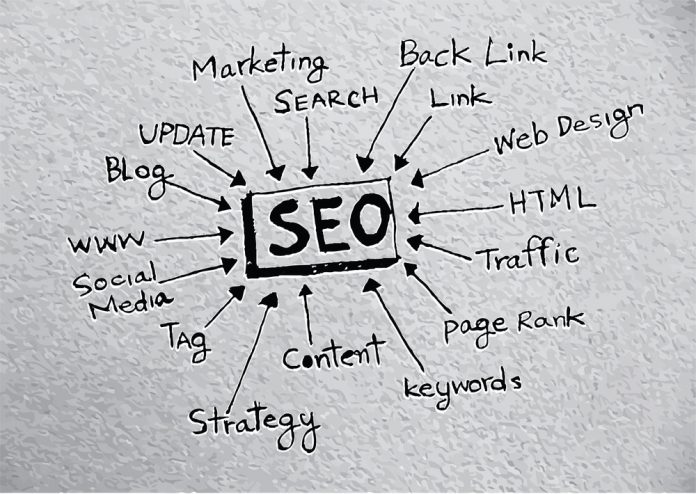Like every extraordinary pair ever (Romeo and Juliet, etc.), your site also has a noteworthy other it needs to think about: search engine optimization.
After studying this article, you will know how to create an effective SEO title. When you have that expertise mastered, the following stage is to investigate how to support it with some TLC.
Without a doubt, if you’re an entrepreneur or a blogger, it’s urgent that you improve your ranking in online results. This is the major reason people on a large scale will visit your pages. Have you heard of ‘Googling’ something?
SEO Is the Combination of Many Ingredients
Much the same as an incredible cocktail, a solid SEO is the mix of numerous ingredients. In this post, we’re going to concentrate on only one of them, and it’s one of the most significant as indicated by Google’s rules: the SEO title tag. You may have experienced it under numerous nom de plumes: SEO title, meta title, page title or the most regularly utilized — title tag. Just in the same way as the title of a book or film draws in the most attention, your title tag is the main thing that clients see on an outcomes page.
1. Title Tag
A title tag is, in fact, a bit of HTML code used to tell search engines what the ‘name’ of your page is because it’s the main thing that they see. The title tag is an exceptionally solid signal for search bots to comprehend what the page imparts.
One of the parts of the metadata is title tag, including the meta description of the page. The two components are undetectable to visitors when visiting your site. On the other hand, they will search you up on search engine results pages (SERPs):
- The blue line is the meta title or title
- The short description of black text is the meta description
2. The Importance of Title Tags
Your title tag mainly depends on three reasons:
a) Ranking Signal
One of the characteristics of a website is the ranking signal or ranking factor that search engine algorithms think about to determine its rankings. Significant search engines don’t authoritatively unveil the subtleties of their ranking algorithms. And we’ll unveil you another secret: your title tag is regarded as the ‘big cheese’ of on-page optimization.
b) Search Engine Results
As we’ve indicated, in a search engine, results are shown with your title. It’s the most evident content in a query item and assumes a major job in whether somebody will click on a result or not. You will most likely attract an equal number of clicks to invite more traffic on your site. This is another significant motivation for optimizing your title tags.
c) Social Media & Web Browsers
Besides being apparent in search results, there are two additional locations where your title tag can be witnessed. One of them is the point at which your connection is shared on social media. And, the other is seen when drifting over your browser’s tab. Ensure you and your business is advancing admirably on a client’s program tab and on social networks as well.
3. Where to Discover the Title Tag?
Embedding your title into your website is a breeze.
This is how you do it on your blog posts:
- Click the ‘Pages Menu’ from the top bar of the Editor.
- Click the applicable page.
- Click the ‘Show More’ symbol.
- Click ‘Page SEO’.
- Enter your title tag under ‘What’s the page’s title on search engines?’.
This is the means by which you do it for your blog entries:
- Open the blog entry, editorial manager.
- Click the ‘Advanced’ button on the base right.
- Enter your ‘Meta Title’.
4. Composing a Decent Title Tag
We’ve landed at the best part: how to connect to the hearts of the Internet individuals and make search engines and visitors happy. Here are five tips to compose the most ideal SEO title tag:
1. Do Your Search
To compose the best title tag, you have to locate the best words. In SEO language, we call these ‘keywords’. An individual will type just 2-5 words into a search box to search for something specific.
2. Put Keywords First
When you have figured out your keywords, type them in naturally. Bots will in general read from left to right. Embedding your keywords toward the beginning of your title tag will allow search engines to assess those words quicker.
3. Apply the Best Format
The principle details to incorporate into the title tag of your site’s fundamental pages are your business name or site name, and a keyword. And if you work in a particular location, it’s a best practice to include the exact location.
4. Compose for People
Remember your most significant viewers — your visitors. Just as your milk to cereal proportion must be right, you have to locate the right balance when inputting your keywords.
5. Compose One-of-a-kind Titles
Copying titles is a major no-no. Search engine bots may get confused and won’t know how to rank your pages. Compose one-of-a-kind titles for every one of your pages. A title can truly determine the position your website receives from a search engine.
Conclusion
The title tag of a website page is a precise and compact depiction of a page’s content.
Find a Home-Based Business to Start-Up >>> Hundreds of Business Listings.

















































